In Thrive Automator, you are able to set up an action that will send an outgoing webhook to a third-party platform.
This can come in handy if you’re looking for ways to connect all sorts of tools/apps to Thrive Automator.
For example, let’s say you want to create an automation that sends user information to an autoresponder that is not available in our list of autoresponders when selecting the “Add user in autoresponder” action:
To make everything easier, I will use a specific example to showcase and explain the action.
Let’s create this automation: when someone submits a form to our site, they are added to my Moosend list. Moosend is an autoresponder for which we do not yet have a direct integration with, but you are now able to send out the information using webhooks.
Naturally, the steps to creating this automation are these ones:
- create the Thrive Automator automation;
- set up the action to send out a webhook in Moosend;
So, to do this, let’s access Thrive Automator:
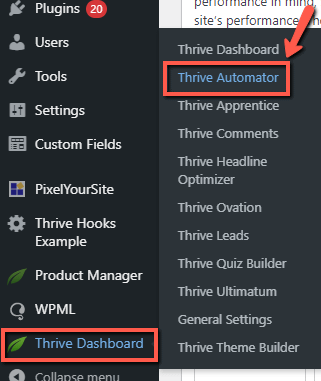
Once the dashboard opens, we’ll go ahead and add a new automation:

As a start trigger, we’re going to choose the “Form Submit” option:

Optionally, you can also choose a condition for the start trigger ad a specific form:
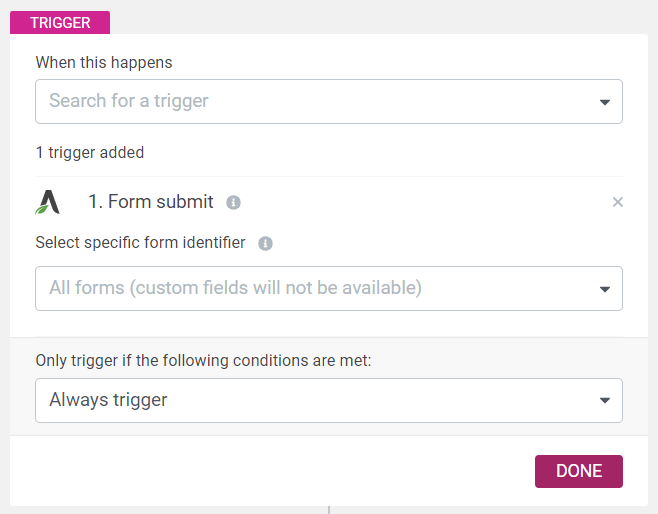
But, if there are no specific conditions that should be met for the start trigger, you can leave the “Always trigger” option selected and click on “Done”:

It’s time to add the action, which is the “Sent Webhook” one. Click on the plus sign to add it:
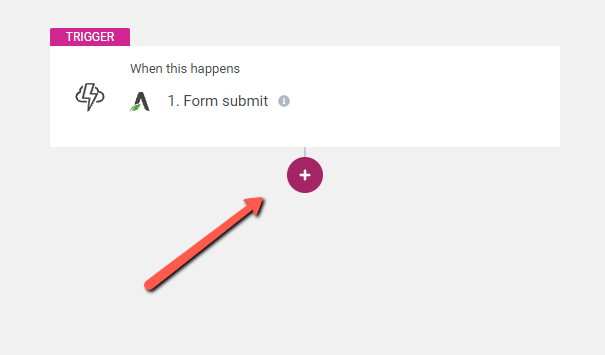
From the list of actions, choose the “Send webhook” action:
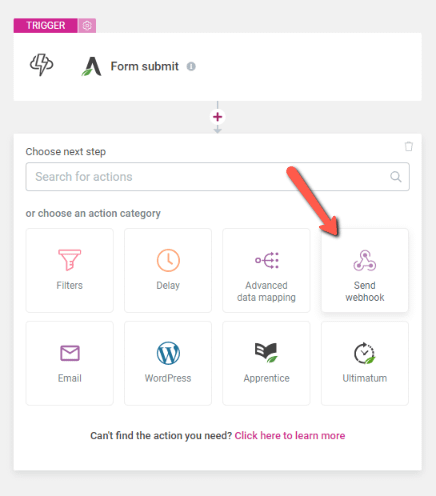
It’s now time to set up the action:
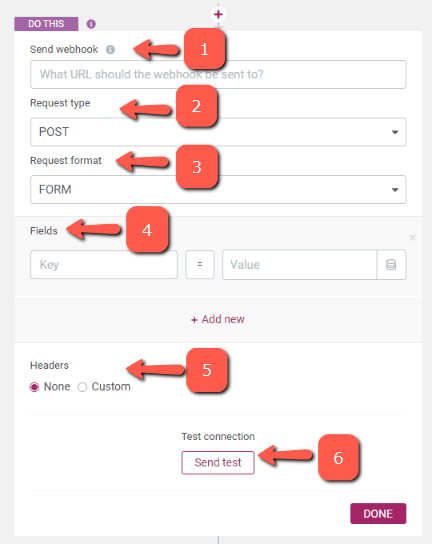
→ 1 – Send webhook
In the first field, you will have to add the webhook URL. In my case, I will get the URL from the Moosend API documentation and it has the following structure:
https://api.moosend.com/v3/subscribers/MailingListID/subscribe.Format?apikey=bafe55f4-e53e-4651-8164-c6d6ff05081bwhere the following parameters have to be replaced with the values from my Moosend account:
- MailingListID – the ID of the mailing list in which I want to add the new subscriber.
You can find it in your Moosend account, by accessing Mailing Lists -> Batch Actions -> Open your mailing list:

- Format – this should be the format of the request. In this particular example, Moosend lets us know that the possible formats are JSON or XML.
- apikey – you will have to replace the example given above with an API key generated from your Moosend account, by accessing the settings section (the gear icon from the top right corner of your dashboard) and clicking on “API key”:
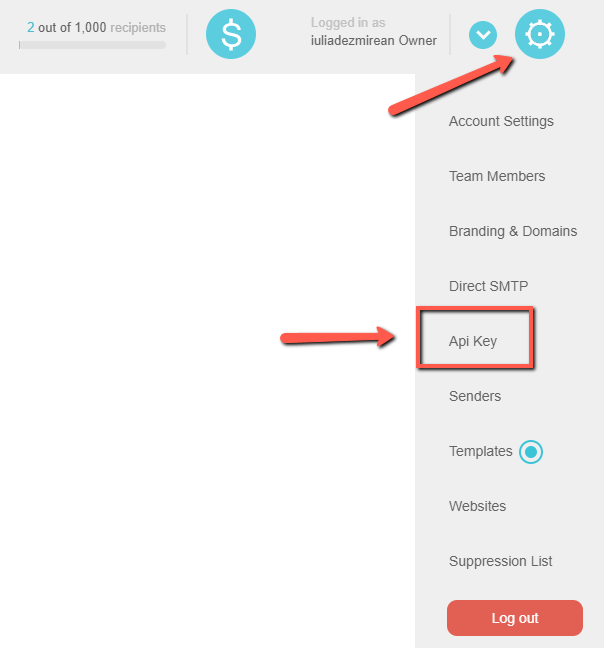
Once you’ve constructed your webhook URL, add it to the first field, in Thrive Automator:
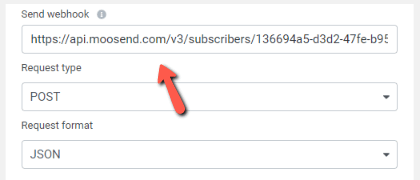
→ 2 – Choose the request method
Next, you have to choose the request method. You can choose between the GET, POST or PUT methods:
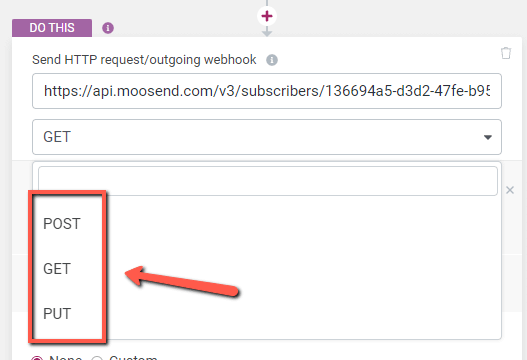
- POST requests are used to send out information to a server and create or update resources. The data sent via a POST request is stored in the body of the request, not in the URL of the request.
- PUT requests are also used to send out information to a server and update or create resources, but they can be created when you are looking to send out a particular value. The PUT method is usually used to update resources available on the server, as it replaces whatever exists at the target URL with something else.
You can use it to make a new resource or overwrite an existing one.
The difference between the POST and the PUT requests is that, if you use the POST method to request the same data twice (in the case of users, for example), two identical users will be created, but with different IDs.
Using the PUT method, in this case, will create the first user, and overwrite it when the request is sent out the second time.
- GET requests are used to retrieve data from a specified source. As opposed to POST requests, all the parameters are expected to be found in the URL request, as query string values. Of course, the URL will have an explicit format, specific to each API call.
Coming back to our example, the Moosend request is a POST request, so I will choose that option from the dropdown:
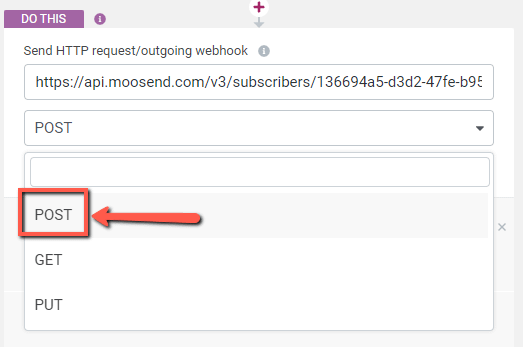
→ 3 – Choose the request format
From the next field, choose the request format:
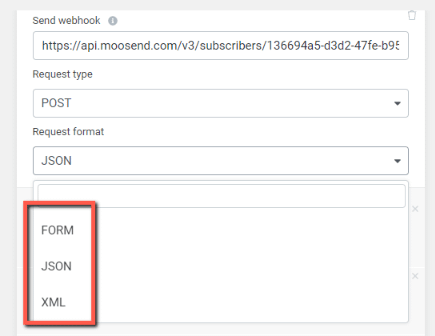
→ 4 – Choose the fields to be added
Next, we’ll have to choose which fields and what data should be sent out to the autoresponder:
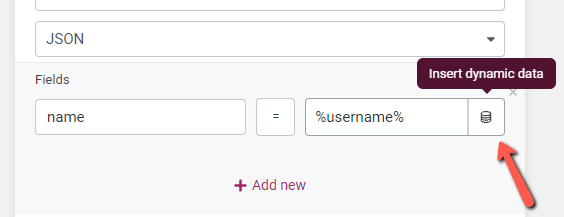
As a tip here, you can make use of the dynamic data option to insert the values that you want to be sent out:
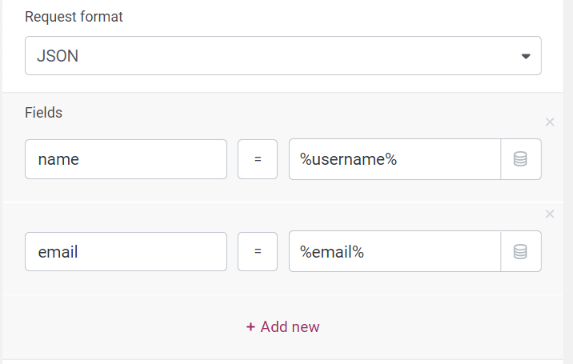
→ 5 – Add a header
You can also add values in the header if you want:
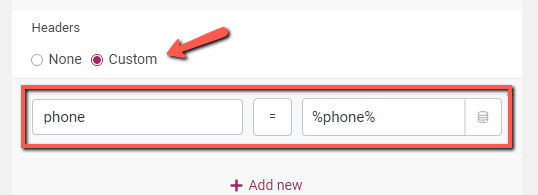
→ 6 – Test the connection
Lastly, you can test out the connection to see if everything works properly, and you will get a success/error notification, to let you know if the webhook has been set up successfully or not:
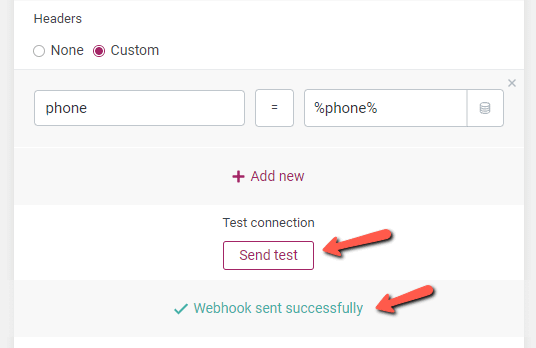
And this is how the test looks like in Moosend:

You can click on “Done” to save the action:
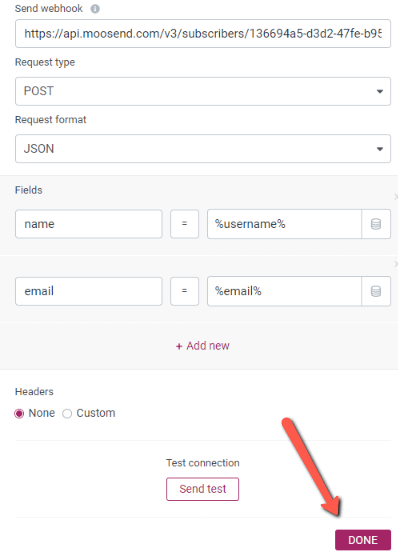
Don’t forget to save the automation:

And we’re all set! We have just sent out the user information and added them to an autoresponder for which a direct integration with Thrive Themes is not yet available.
Using the “Send webhook” action from Thrive Automator will give you endless possibilities to connect to various services, or to applications that you have created.
Remember that you can always find out more information and examples of automations created with Thrive Automator in our knowledge base.